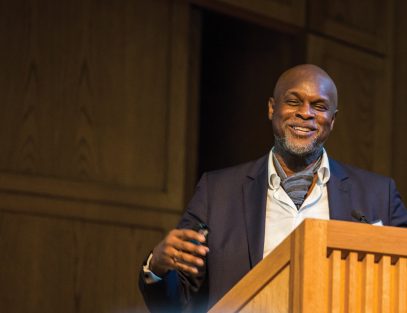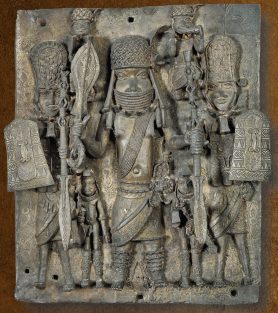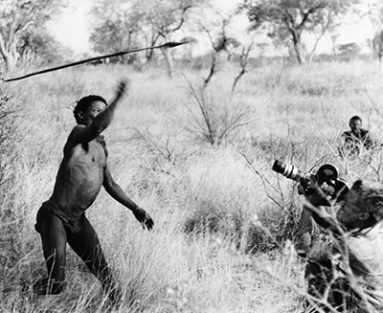Africa

Vol. 64 / No. 1
Rotating Displays: Deer Dancer and African Textiles
The 2013 Native American Voices exhibition includes many of the most spectacular textiles in the Penn Museum’s North American collections. […]
View Article
Vol. 63 / No. 1
By: Jean Macintosh Turfa
Fragments of Carthage Rediscovered: Discoveries From Our Museum Storerooms
Fragments of Carthage Rediscovered Discoveries From Our Museum Storerooms [authors] The objects in the Penn Museum store rooms—many collected more […]
View Article
Vol. 63 / No. 1
By: Gabriel Jermaine Vanlandingham-Dunn
Blood In A Box: Wrestling with Skin and History Through an Mbila
Artifact Perspective As a black American child growing up in West Baltimore, Maryland during the 1980s, I was fortunate enough […]
View Article
Vol. 61 / No. 2
By: Jane Hickman and Alyssa Connell Haslam
Making the Africa Galleries: A Conversation with Tukufu Zuberi
TUKUFU ZUBERI, PH.D., is the Curator of the Africa Galleries. He is the Lasry Family Professor of Race Relations, and […]
View Article
Vol. 61 / No. 2
By: Jane Hickman, Lauren Cooper, Dwaune Latimer, Alioune Diack and Jessica Bicknell
A Selection of Objects from Our Africa Galleries
THE AFRICA COLLECTION at the Penn Museum includes objects that were purchased by or gifted to the Museum or collected […]
View Article
Vol. 61 / No. 2
By: Christina Griffith
The Asante Gold Weights: Practical, Unique, Artistic Tools of the Trade
Within the glass cases in the Africa Galleries, they appear as miniaturized trophies, toys, or jewelry, but these beautifully crafted […]
View Article
Vol. 61 / No. 2
By: Heather J. Sharkey
A Famous Queen Mother from Benin: Favorite Object
THE QUEEN MOTHER, or “Iyoba,” was a powerful figure in the Edo kingdom of Benin, which ruled parts of the […]
View Article
Vol. 61 / No. 1
Gallery Sneak Peak
Africa Galleries They are often called “gold weights,” but they are actually made of brass, cast using the lost wax […]
View Article
Vol. 58 / No. 3
By: Ilisa Barbash
Kalahari Adventures: Bob Dyson's Travels in Africa
BEFORE DR. ROBERT H. DYSON, JR. became Williams Director of the Penn Museum in 1981, he established himself as an […]
View Article
Vol. 58 / No. 3
By: Alessandro Pezzati
Banana Recipes from West Africa,1937: From the Archives
Henry Usher Hall (1876–1944), Curator of the General Ethnology Section from 1915 to 1935, undertook two expeditions for the Penn […]
View Article